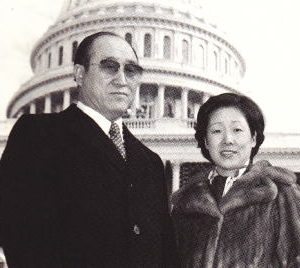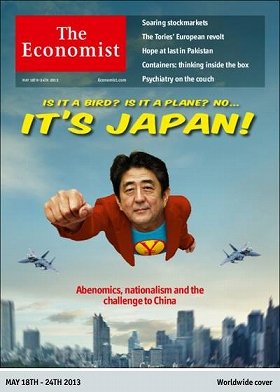Hiroshima on August 6th, Nagasaki on August 9th, and August 15th. The season to look back on the defeat and the postwar period has come around again. The impact of Abe's assassination provided an excellent opportunity to expose the darkness of postwar Japanese politics to the light of day. However, the established media continues to report perfunctory ruts. Even if they report the terrible collusion between the former Unification Church and the Liberal Democratic Party, they never delve into the role played by the CIA under the Cold War structure that created both. The Liberal Democratic Party, which dominates Japan semi-permanently after the war, is a puppet/proxy organization of the US CIA and neoconservatives. It is a taboo to touch on the darkness between Japan and the United States, which is the key to a deeper understanding of postwar politics. First of all, in this blog, part of the funds from Japan that went to the Unification Church in South Korea was returned to Japan via the United States. I would like to raise the issue that there is no doubt that it has been distributed to activists and right-wing organizations.
■The headquarters of the Unification Church is Washington
Founded in 1954, the Unification Church began its activities based in the United States in the 1970s under the leadership of Rev. Sun Myung Moon. Funds siphoned from Japanese believers who were duped by psychic marketing were once sent to headquarters in South Korea, but most of them were used to fund activities in the United States, where they focused on spreading their missionary work to the rest of the world. It is unclear exactly how much money the Unification Church has collected. However, the Japanese media Bunshun reports that over the nine years since 1999, a total of 490 billion yen, or about 50 billion yen per year, has been transferred from Japan to South Korea. According to the New York Times, in the 35 years from 1976 to 2010, 3.6 billion dollars (400 billion yen) of the funds collected in Japan were sent to the Old Unification Church in the United States (via South Korea ).
In 1961, the military dictatorship of Park Chung-hee, which was born in a coup d'état, established the spy agency KCIA (Central Intelligence Agency). The first director of the KCIA, Kim Jong-pil, worked to increase the number of Unification Church members and later became prime minister. According to an internal CIA document drafted in 1963, "Kim Jong-pil, as head of the KCIA, organized the Unification Church and used it as a political tool with 27,000 followers." The CIA, the Unification Church, and the KCIA are one.
 Sun Myung Moon moved to Washington in 1972 at the recommendation of the KCIA. Washington-based lobbying has a global impact. Together with Park Bo-hee (1930-2019), a South Korean military officer who became a cult leader, Moon published “News World” and “New York City Tribune” in the United States, and the “Washington Times” in the United States. It even acquired UPI, which was a company.
Sun Myung Moon moved to Washington in 1972 at the recommendation of the KCIA. Washington-based lobbying has a global impact. Together with Park Bo-hee (1930-2019), a South Korean military officer who became a cult leader, Moon published “News World” and “New York City Tribune” in the United States, and the “Washington Times” in the United States. It even acquired UPI, which was a company.
In addition, they are involved in a wide range of activities, including the Korea-America Cultural Freedom Foundation, Causa International, World Peace Federation, Korea Cultural Foundation, Central and South American Integration Organization, World Peace Summit, and World Press Association. It became a foothold for lobbying activities.
■ Integration with US neo-conservatives
His influence spread rapidly within the United States. But at the same time, concerns about the cult are growing in US politics. A 1977 report by the U.S. House of Representatives Committee on International Affairs identified more than 100 members of Congress as being involved in lobbying by the KCIA and Sun Myung Moon. This disturbance is the so-called “Korea Gate”.
However, his approach to American politics began with Richard Nixon. His close relationship with former President Donald Reagan was often mentioned. Former President George H.W. Bush, who served as CIA Director, has repeatedly appeared at Unification Church events. According to the Washington Post, Bush was paid more than $80,000 for one speech.
Most recently, in May 2021, former Vice President Mike Pence, former Secretary of State Mike Pompeo, former Secretary of Defense Mark Esper, and former UN Secretary General Ban Ki-moon also appeared at events related to the former Unification Church. In September of the same year, former President Donald Trump also spoke at another former Unification Church event.
Going back to the topic, the Unification Church will also deepen its relationship with US Republican neoconservatives Dick Cheney, Donald Rumsfeld, and Paul Wolfovitz, who carried out the post-Cold War hegemony strategy for the United States as cronies of the Bush family. As the vice president of the Bush administration and as key cabinet ministers, they will work with the Japan handlers to urge the Koizumi and Abe administrations to dispatch the Self-Defense Forces overseas and engage in collective defense with the US military and NATO.
■Rise of Seiwakai: Neoconservatives, CIA, Unification Church
The rise of the Liberal Democratic Party Seiwakai (Abe faction), which inherited the faction led by Nobusuke Kishi, Takeo Fukuda and Shintaro Abe, since the Yoshiro Mori administration took office in 2000 is inextricably linked to the rise of US neoconservatives after the end of the Cold War. The Unification Church, the CIA, connected them. The Seiwakai, with Shinzo Abe as the leader, pushed the former conservative mainstream factions such as ``Kochikai'', which originated with Shigeru Yoshida and Hayato Ikeda, and ``Keiseikai,'' which was affiliated with Kakuei Tanaka, to the sidelines and became the mainstream neoconservatives. It was because of the backing of the CIA and the Unification Church.
In other words, the neoconservative-led invasion of Afghanistan following the terrorist attacks on the United States in September 2001 and the war in Iraq in 2003 required a major shift in Japan's conservative politics. Junichiro Koizumi, the successor to the full-fledged Seiwakai Cabinet, said in the LDP presidential election that he would "destroy the LDP." Koizumi's remarks can only be seen as speaking on behalf of the US neoconservatives.
Even before the rise of the Seiwakai, the Unification Church had a strong connection with the Japanese political world. In March 1992, Sun Myung Moon, who was sentenced to prison for tax evasion in the United States, should have been prohibited from entering Japan under the provisions of the Immigration Control Act, but he was allowed to enter Japan under the direction of Shin Kanemaru, vice president of the Liberal Democratic Party at the time. At that time, the Unification Church's psychic marketing method was spreading in Japan, and it was in the midst of becoming a social problem, and it was an unusual event for the Liberal Democratic Party vice-president to sound out the immigration authorities about extralegal measures.
In September 1990, Kanemaru formed the Kanemaru delegation to visit North Korea with the Socialist Party and LDP lawmakers. A member of the group revealed that the LDP construction group was greatly enriched by intermediation of large-scale imports of construction materials such as high-quality gravel from North Korea. Sun Myung Moon, originally from North Korea, visited North Korea at the end of 1991, at the same time as the collapse of the Soviet Union, met with then-President Kim Il-sung, and promised economic aid of $3.5 billion. It would not be an exaggeration to say that Sun Myung Moon, who had long had a strong connection with the North, acted as an intermediary for Kanemaru's visit to North Korea, which led to the extralegal measures surrounding Moon's entry into Japan.
■ Unification Church's long-cherished wish: the birth of the Abe administration
Japanese believers say they were deeply saddened by Unification Church leaders when Shinzo Abe's father, Shintaro, died in 1991 at the age of 67. When Prime Minister Yasuhiro Nakasone resigned in 1987 and appointed Noboru Takeshita as his successor, the upper echelons of the Japanese religious community aspired to become more involved in politics. Shintaro's failure to appoint him as prime minister, who has strong ties to the Unification Church, made his expectations for his son Shinzo grow even more.
Abe has published his new book, To a Beautiful Country, in preparation for his run for the LDP presidential election scheduled for September 20, 2006. It became a bestseller with over 500,000 copies sold. This title is borrowed from the posthumous collection "Beautiful Country: Japan's Mission" by Osami Kuboki (1931-1998), the first president of the Unification Church in Japan. Shinzo Abe, the youngest prime minister of Japan since the war, launched the Unification Church/LDP government. It would not have been possible without the backing of the US neoconservatives, the CIA, and the human and financial support of the Unification Church, who were trying to solidify the Seiwakai government of the Liberal Democratic Party that followed Mori and Koizumi. . This is the background to Koizumi's selection of Shinzo Abe, who has no experience as a cabinet minister or a key party official, as the party's secretary-general and then as chief cabinet secretary.
 A large number of Abe cheering squads will be organized at the end of 2012 when the Abe administration, which resigned after one year in 2007, will reappear. 50,000 to 60,000 Unification Church members became members of the Liberal Democratic Party and voted for Abe in the presidential election, turning Nippon Kaigi into a pro-U.S., anti-China organization, and various publications and Internet media that hate China and South Korea. appeared, and academic experts and celebrities called for the formation of the ``Association to Realize Prime Minister Abe'' and so on. The British magazine The Economist welcomed Abe by likening him to Superman on the cover.
A large number of Abe cheering squads will be organized at the end of 2012 when the Abe administration, which resigned after one year in 2007, will reappear. 50,000 to 60,000 Unification Church members became members of the Liberal Democratic Party and voted for Abe in the presidential election, turning Nippon Kaigi into a pro-U.S., anti-China organization, and various publications and Internet media that hate China and South Korea. appeared, and academic experts and celebrities called for the formation of the ``Association to Realize Prime Minister Abe'' and so on. The British magazine The Economist welcomed Abe by likening him to Superman on the cover.
There was the intention of the US power center to cover up the fact that Japan's economic decline after the bursting of the bubble economy was a deliberate ploy by the US, and to direct the anger and disgust of the Japanese people exclusively to the rising China. . There is no doubt that the Unification Church and its affiliated groups have been in step with this and have provided a large amount of financial support for Abe.
